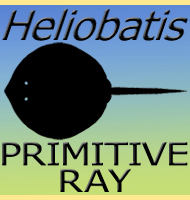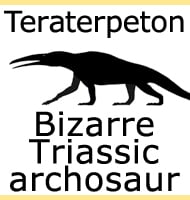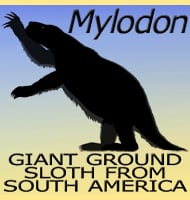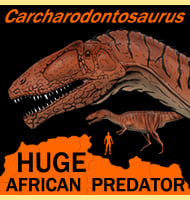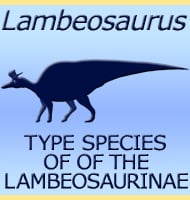In Depth
A relative of the better known Diacodexis, Indohyus has been speculated to be a member of a group of mammals that were possibly related to the mammals whose descendants would eventually go on to become the whales. This stems back to study of Indohyus which revealed that it had bones denser than most terrestrial mammals. This condition is described as Osteosclerosis, and is quite common in animals that live aquatic lifestyles because the denser bones allow the body to sink into the water rather than resisting the effects of the water buoyancy pushing back. In the simplest terms, dense bones make it easier to swim below the surface. Isotopic analysis however has yielded mixed results, with the levels of Oxygen-18 isotopes suggesting that Indohyus was aquatic, while Carbon-13 levels indicate it was terrestrial (living mainly on land).
More support for the aquatic theory however came when an assistant for a Professor J. G. M. Thewissen accidentally broke an Indohyus fossil, but in so doing revealed the auditory bulla. Thewissen recognised this as being similar to whales and their ancestors like Pakicetus. Today Indohyus is often considered to have lived like a Chevrotain (also known as ‘mouse deer’) a small herbivorous forest animal that will dive into and under water where they can stay for a few minutes to escape predators. The theory for Indohyus being either an ancestor or related to the ancestors of whales remains controversial as there are many opinions regarding the origins of whale evolution with little in the way of fossils to form a complete and comprehensive picture. Another potential group of whale ancestors proposed in the past are the mesonychids, but this group is just as controversial. So far the most definitive ancestor of whales is the aforementioned Pakicetus, with the evolutionary line going onto forms like Ambulocetus to Rodhocetus to Protocetus, slowly but surely becoming more whale-like. From this point on cetacean development begins to become easier to follow, but the links between terrestrial mammals and partially aquatic ones like Pakicetus remains a mystery with only speculation about possibilities joining the gap. But realistically it is only a matter of time before more fossils are found since the Eocene era fossil deposits of India and Pakistan have already yielded many important discoveries since the closing decades of the twentieth century.
Further Reading
– New mammals from Murree (Kalakot Zone) of the Himalayan foot hills near Kalakot, Jammu & Kasmir State, India. – Journal of the Geological Society of India 12(2):125-134. – A. Ranga Rao – 1971. – Artiodactyla and Perissodactyla (Mammalia) from the early-middle Eocene Kuldana Formation of Kohat (Pakistan). – Contributions from the Museum of Paleontology, University of Michigan 27(11):247-274. – J.G.M. Thewissen, P.D. Gingerich & D.E. Russell – 1987.

